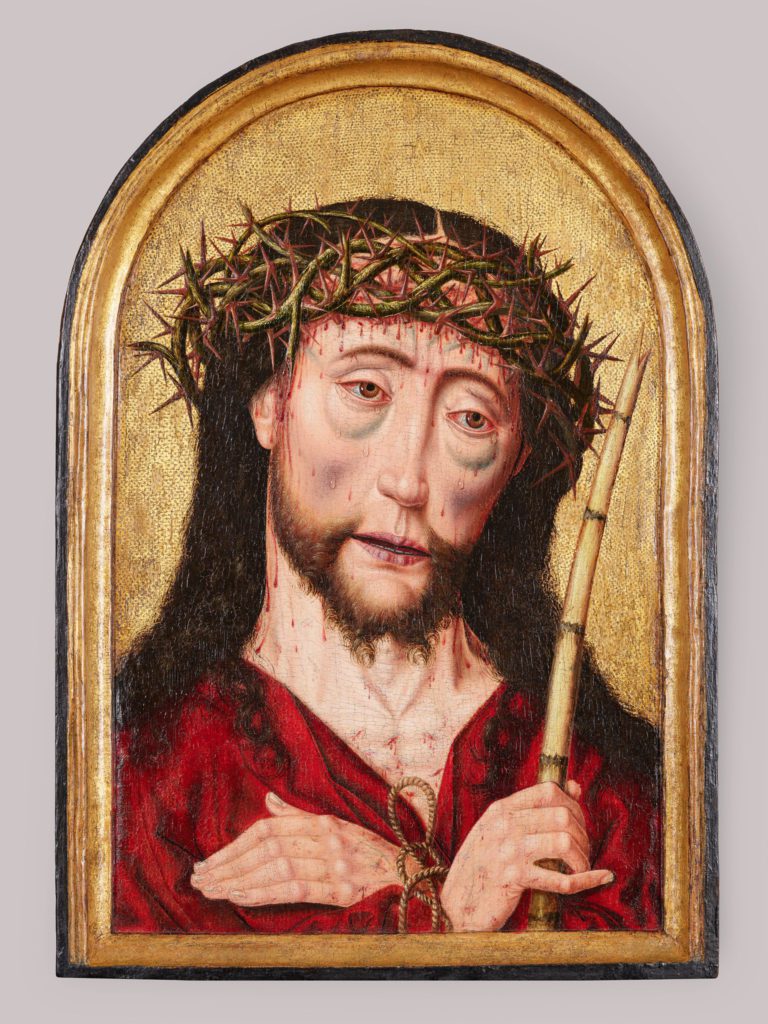After five years of restoration work, Hugo van der Goes’ “Death of the Virgin” (1480)—a masterpiece of early Flemish art—is ripe for rediscovery. The work is at center stage in a new exhibit, and in good company with the recently acquired “Man of Sorrows” (1495), as well as a treasure trove of late medieval works.
With its ‘Face to Face with Death’ exhibit, Musea Brugge, the custodian of a world-famous collection of Flemish Primitive art, takes “Death of the Virgin” as its launching pad for exploring six different themes.
According to its website’s description:
Each theme will be developed with reference to other great masterpieces, some of which belong to the Musea Brugge collection, while others have been brought to Bruges from all over Europe. These works include paintings by Hans Memling, Jan Provoost, and Albrecht Bouts, but sculptures, manuscripts, and pieces of music will also be used to bring visitors face to face with death in its different forms. In total, more than seventy works of art will be displayed.
The exhibit, which is being held in the medieval Saint John’s hospital in melancholic Bruges (a more appropriate setting can scarcely be imagined), will “cause us to pause and reflect on a number of timeless and current subjects, such as saying a last farewell to loved ones, meaning, and spirituality.”
It also “examines the life and the iconic significance of the Virgin and sheds new light on the virtuosity of the master himself: Hugo van der Goes.” The experience is supplemented by testimonies (shot in atmospheric black-and-white video) from five ‘New Masters,’ each of whom will introduce a different facet of the exhibition.
Asked about the painstaking work involved in the restoration of “Death of the Virgin,” Anne van Oosterwijk, director at Musea Brugge, commented that the work “has undergone a transformation,” and that, after removal of yellow varnish and overpaints, “the colors are popping.”

In his enduring 1950 work The Story of Art, author E. H. Gombrich remarked upon “the admirable way” in which van der Goes—whose art he described as “tense” and “serious,” making it “very different from the placid moods of [perhaps the most famous Flemish Primitive] Jan van Eyck”—represented “the varying reactions of the twelve apostles to the event they are witnessing.”
It is an effect that has lost none of its potency, as evinced by van Oosterwijk being likewise charmed by the lifelike quality of these men’s expressions. “You see their individual emotions … These are men’s faces one could encounter on the street,” she says.
Musea Brugge can now also pride itself on owning “Man of Sorrows” by Albrecht Bouts, a student of van der Goes.
This painting depicts Jesus “with folded hands, a reed and a crown of thorns, thus shown to the crowd by [Roman governor of Judaea] Pontius Pilate,” says van Oosterwijk. “It is befitting of being displayed in the exhibit because it was intended as a private devotion, for people to empathize with Jesus.”

“Face to Face with Death. Hugo van der Goes, Old Masters, New Looks” is open for visitors until February 5th, 2023. After this date, the Sint-Janshospitaal shall close for renovation work until autumn, 2023.